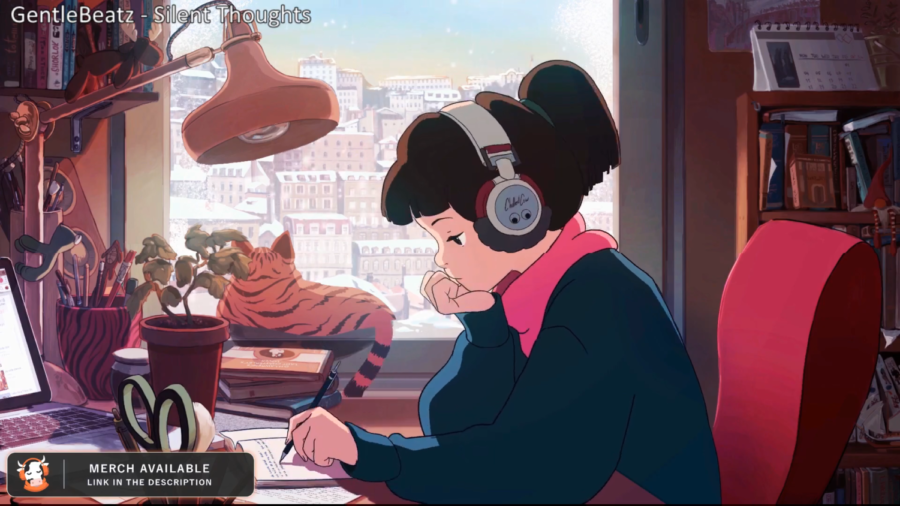Shiralkar: A moment of lo-fi
Columnist Parth Shiralkar talks about the calming effects of listening to lo-fi music in his column. The video “lofi hip hop radio – beats to relax/study to” is one of the most popular on YouTube and streams 24/7.
February 9, 2020
It’s 2020. Things are moving faster than ever; information is flowing not in streams but in huge waves that crash over you, and there is a rare moment of peace deep within your mind, but it is rare, and it is ephemeral. So you listen to music. And yet, sometimes music takes up a bunch of bandwidth in your brain, depending on what kind of music it is.
Sometimes you just want to lay back, chill out, think about palm trees and tax returns. Most music has elements to it that doesn’t really allow for this kind of vibe; these are not thoughts for tones and verses that switch up within moments. This is where lo-fi music comes in.
A method of production that deals with not just the aesthetic quality of the music itself but also the environmental interference of the elements that are part of the production itself, lo-fi music has a smooth and buttery quality to it that is desirable. Similar to the vibe that synth-wave and vapor-wave music invokes, lo-fi music (usually produced with hip hop rhythms) has a poignant and sometimes deeply emotional value to it.
Modern SoundCloud rappers use these lo-fi beats to rap over simply because most lo-fi is the same sample being played over and over again. These are samples usually in a minor scale — like Aeolian mode — and have jazzy tunes overlaid on top of soft ambient pads. Nujabes, the late Japanese music producer, was one of the earliest pioneers of lo-fi music. Some of his work, like Lady Brown, is easily a great example of good low-fidelity hip hop music, making him a cult legend in the lo-fi music scene.
Lo-fi music is soft, it is grounded and it is repetitive. It is very easy to make and hence you have a steady rise in the production of this genre. The repetition of the sample oozes a smoothness that is difficult to describe. There is no noise in lo-fi, just the sounds of the cassette tape or a loop of raindrops or the steady scratch of a vinyl record in the background. A good example of such a track is 5:32PM by The Deli.
The anime and 80s aesthetic and the all-lowercase lends to the chill but touching vibes of the music. A very good example of this kind of Japanese music (I saw a YouTube user refer to this as “samurai lo-fi”) is this song by RUDE called Eternal Youth. Maybe you might have heard it to the backdrop of a Minecraft video edit, but the track is pretty amazing by itself.
Sometimes lo-fi tracks will have a small sample of people just talking, doing their own thing: a dialogue that seems out of place but is an integral part of the overall aesthetic. It almost feels like you’re in that moment with the people there, comfortable in your own skin, just chilling, which is, again, an important part of good lo-fi. I personally listen to a lot of lo-fi and sometimes produce some. Please feel free to reach out to me for recommendations of music that’ll make you spontaneously sad.
There is a good chance that you’ve come across a constant live-stream on YouTube titled something like “lo-fi chill hip hop beats to relax to/study to” with the image of an anime girl in a comfy green sweater working at her desk with her cat and a warm scene in the background. But, I wonder, why would you choose to study to lo-fi when you could daydream to it?







